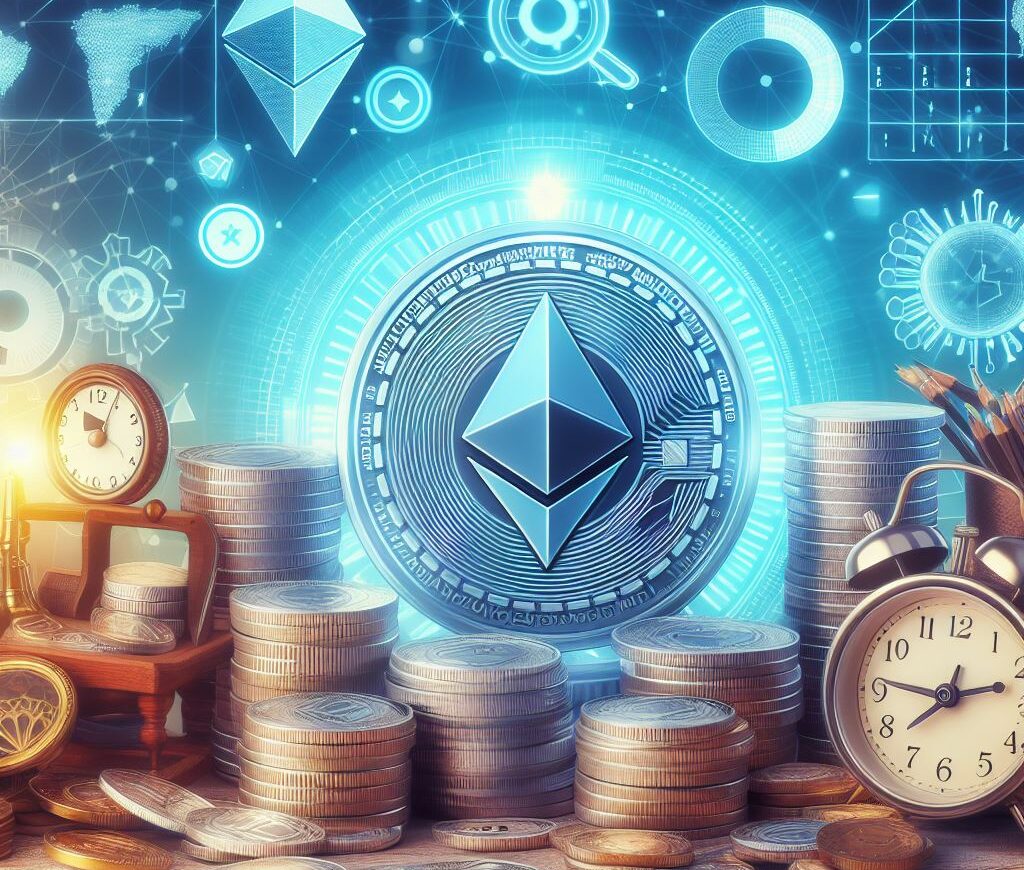Gems are coins that are not currently being noticed but will grow in value in the future. Top cryptocurrencies that are on the market today were once considered gems. The key to success in the cryptocurrency space is to find these gems before they go mainstream.
In this post, we will reveal all you need to know about how to discover DeFi gems. From understanding the fundamentals to conducting thorough research to managing your risk.
Jump To
ToggleStep 1: Master the DeFi Fundamentals
Before you start looking for DeFi gems, you should have a solid understanding of the DeFi landscape. DeFi, or decentralized finance, refers to the ecosystem of financial applications built on blockchain technology, primarily Ethereum.
Some key concepts to know include; liquidity pools, yield farming, Automated Market Makers (AMMs), and stablecoins. By learning about these core concepts, you will be better equipped to evaluate the potential and risks of different DeFi projects.
Step 2: Stay Informed and Connected
The DeFi space changes quickly so you should always stay informed about the industry.
Some key ways to do this include:
- Following prominent DeFi influencers, developers, and projects on Twitter and other social media platforms.
- Joining DeFi-focused communities on Discord, Telegram, and Reddit to engage with other enthusiasts and learn about new projects.
- Reading DeFi-focused news outlets and blogs to stay up-to-date on the latest developments and trends.
- Attending virtual and in-person DeFi events and conferences to network and learn from industry experts.
By following the DeFi community, you will be better positioned to spot promising projects before they go mainstream.
Step 3: Evaluate the Team and Vision
When you come across a new DeFi project that interests you, you should evaluate the team behind it. A strong, experienced team with a clear vision is necessary for the long-term success of any project.
Some key things to look for include:
- Transparent and doxxed (publicly identified) team members with relevant experience in blockchain, finance, or related fields.
- A clear and compelling vision for the project, with a well-defined roadmap and milestones.
- Active and engaged founders and team members who are responsive to community questions and feedback.
- Partnerships or advisors from established players in the DeFi or broader crypto space.
Be wary of projects with anonymous or unqualified team members, vague or unrealistic promises, or a lack of transparency.
Step 4: Analyze the Tokenomics
Tokenomics, or the economics of a project’s token, plays a crucial role in its long-term viability and potential for growth. When evaluating a DeFi project, take a close look at its token distribution, utility, and incentive mechanisms.
Some key factors to consider include; token distribution, token utility, inflation and emission schedule, and incentive mechanisms. However, be mindful of unsustainable yield farming schemes that can lead to short-term pumps and long-term dumps.
By thoroughly analyzing a project’s tokenomics, you can better assess its long-term potential and avoid getting burned by short-sighted schemes.
Step 5: Check out Community and Sentiment
The strength and engagement of a project’s community can be a powerful indicator of its potential. Research on the project’s community channels, such as Discord, Telegram, and Twitter, to get a sense of the sentiment and activity around it.
Some positive signs to look for include:
- An active and engaged community of users, investors, and developers who are passionate about the project.
- Thoughtful and informative discussions around the project’s technology, roadmap, and potential use cases.
- A supportive and welcoming environment for newcomers and skeptics alike.
- Organic growth and buzz, rather than artificial hype or paid shilling.
On the other hand, be cautious of projects with toxic or echo-chamber-like communities, as well as those with a lack of genuine engagement or activity.
Step 6: Assess the Market Fit and Competition
No DeFi project exists in a vacuum. To truly gauge a project’s potential, you should evaluate its market fit and competition within the broader DeFi landscape.
Some key questions to ask include:
- What problem is this project solving, and how does it compare to existing solutions in the market?
- Who are the project’s main competitors, and what advantages or disadvantages does it have compared to them?
- Is there a genuine demand or need for this project’s offering, or is it a solution in search of a problem?
- How does the project differentiate itself and stand out in an increasingly crowded DeFi space?
By assessing a project’s market fit and competitive positioning, you can better determine whether it has the potential for long-term adoption and growth.
Step 7: Evaluate the Technology and Security
The foundation of any DeFi project is its underlying technology and security. Before investing in a project, evaluate the robustness and reliability of its smart contracts, as well as its overall security practices.
Some key factors to consider include; audits, open source, bug bounties, and security track records. By prioritizing projects with strong security practices and a proven track record, you can help mitigate the risk of losing funds to hacks or exploits.
Step 8: Manage Your Risk
Even with thorough research and analysis, investing in DeFi projects always carries inherent risks. To trade in this space successfully, you should practice proper risk management by diversifying and always staying vigilant. Also, do not invest more than you can afford to lose in any single project.
Key Takeaways
- Master the fundamentals of DeFi, including liquidity pools, yield farming, AMMs, and stablecoins.
- Stay informed and connected by following influencers, joining communities, reading news, and attending events.
- Evaluate the team and vision, looking for transparency, relevant experience, and a clear roadmap.
- Analyze the tokenomics, including distribution, utility, inflation, and incentive mechanisms.
- Assess the community and sentiment, looking for active engagement, organic growth, and a welcoming environment.
- Consider the market fit and competition, evaluating the project’s unique value proposition and competitive advantages.
- Prioritize technology and security, favoring projects with audited contracts, open source code, and strong security practices.
FAQs
1. How much should I invest in a single DeFi project?
A: As a general rule, never invest more than you can afford to lose. The exact amount will depend on your risk tolerance and conviction in the project, but it’s wise to limit your exposure to any single investment.
2. Should I only invest in projects that have been audited?
A: While audits are an important factor to consider, they aren’t a guarantee of security. Even audited projects can experience exploits or vulnerabilities. Use audits as one factor in your overall evaluation, but don’t rely on them exclusively.
3. How long should I hold a DeFi investment?
A: The optimal holding period will vary depending on the project and your investment goals. Some DeFi gems may deliver rapid, short-term gains, while others may require a longer-term holding period to realize their full potential. Continuously reassess your positions based on the project’s progress and the broader market conditions.
4. What should I do if a project I’ve invested in experiences a hack or exploit?
A: If a project you have invested in suffers a security incident, the priority is to assess the severity of the situation and take steps to secure your funds if necessary. Monitor official communication channels for updates and guidance from the project team. Consider the team’s response and the project’s ability to recover when re-evaluating your investment thesis.
5. How can I stay up-to-date on the latest DeFi trends and opportunities?
A: Immerse yourself in the DeFi community by following thought leaders on social media, joining discussion forums and chat groups, and attending industry events and webinars. Regularly read DeFi-focused news outlets and blogs to stay informed on the latest developments and emerging trends. Cultivate a diverse network of informed perspectives to help guide your discovery process.










